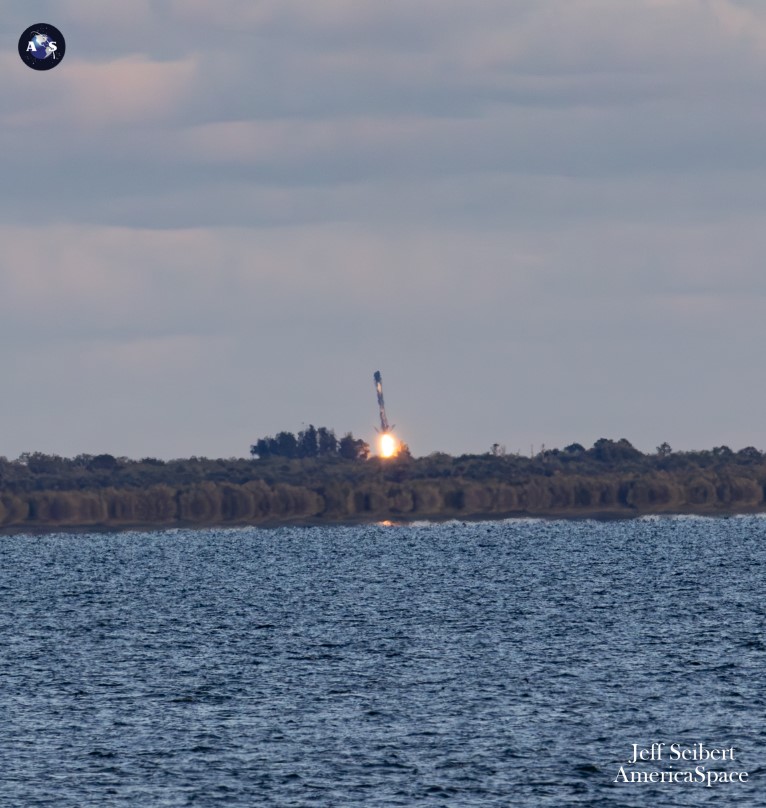
SpaceX has successfully completed its fourth Falcon 9 mission inside the month’s opening week, as the Hawthorne, Calif.-headquartered organization wrapped up a dramatic triple-header weekend of launches. Inside April’s first seven days, four boosters that now boast almost 50 flights between them took to the skies from the East and West Coasts of the United States and ferried nearly 80 payloads into orbit, whose objectives ran the gamut from internet communications to Earth observations and from Signals Intelligence (SIGINT) to Internet of Things (IoT) functionality.
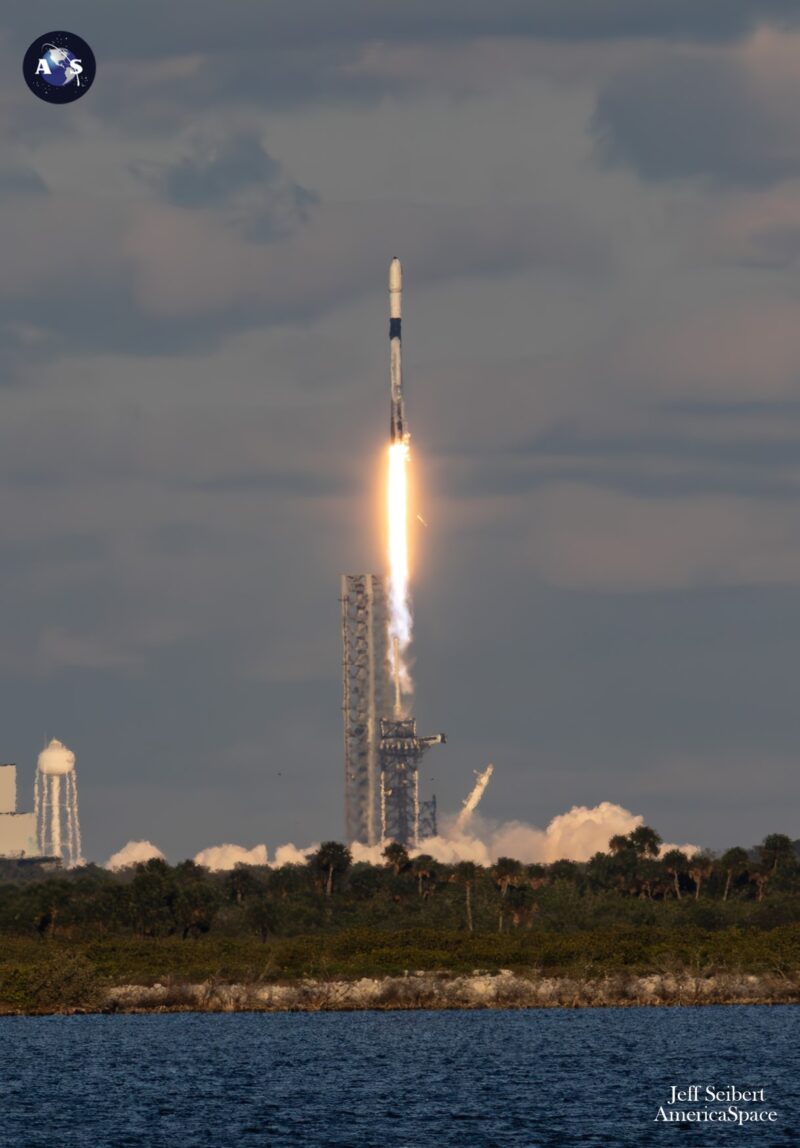
Three Falcon 9s rose from Vandenberg Space Force Base, Calif., and Florida’s Cape Canaveral Space Force Station between Tuesday’s pre-dawn darkness and Saturday’s post-sunset gloom with a total of 66 Starlink low-orbiting internet communications satellites, including six new birds with “Direct-to-Cell” capability, permitting mobile network providers to offer “seamless global access to texting, calling and browsing”, whether “on land, lakes or coastal waters”, without the need to change hardware or firmware. “The six with Direct-to-Cell capabilities have an advanced modem on board that will act as a cellphone tower in space,” SpaceX noted in an update on X, posted Saturday night, “allowing network integration similar to a standard roaming partner.”
Heading into Sunday evening, SpaceX geared up for its fourth launch of April and its 35th Falcon 9 mission within 2024’s opening quarter, an average cadence of a flight every 2.8 days. Designated “Bandwagon-1”, last night’s mission comprised 11 spacecraft from the United States, Japan, India, South Korea and Australia, but despite the “one-ness” of its name it is far from being the first multi-customer “rideshare” by SpaceX, with the 64-payload SSO-A SmallSat Express having kicked off proceedings in December 2018.
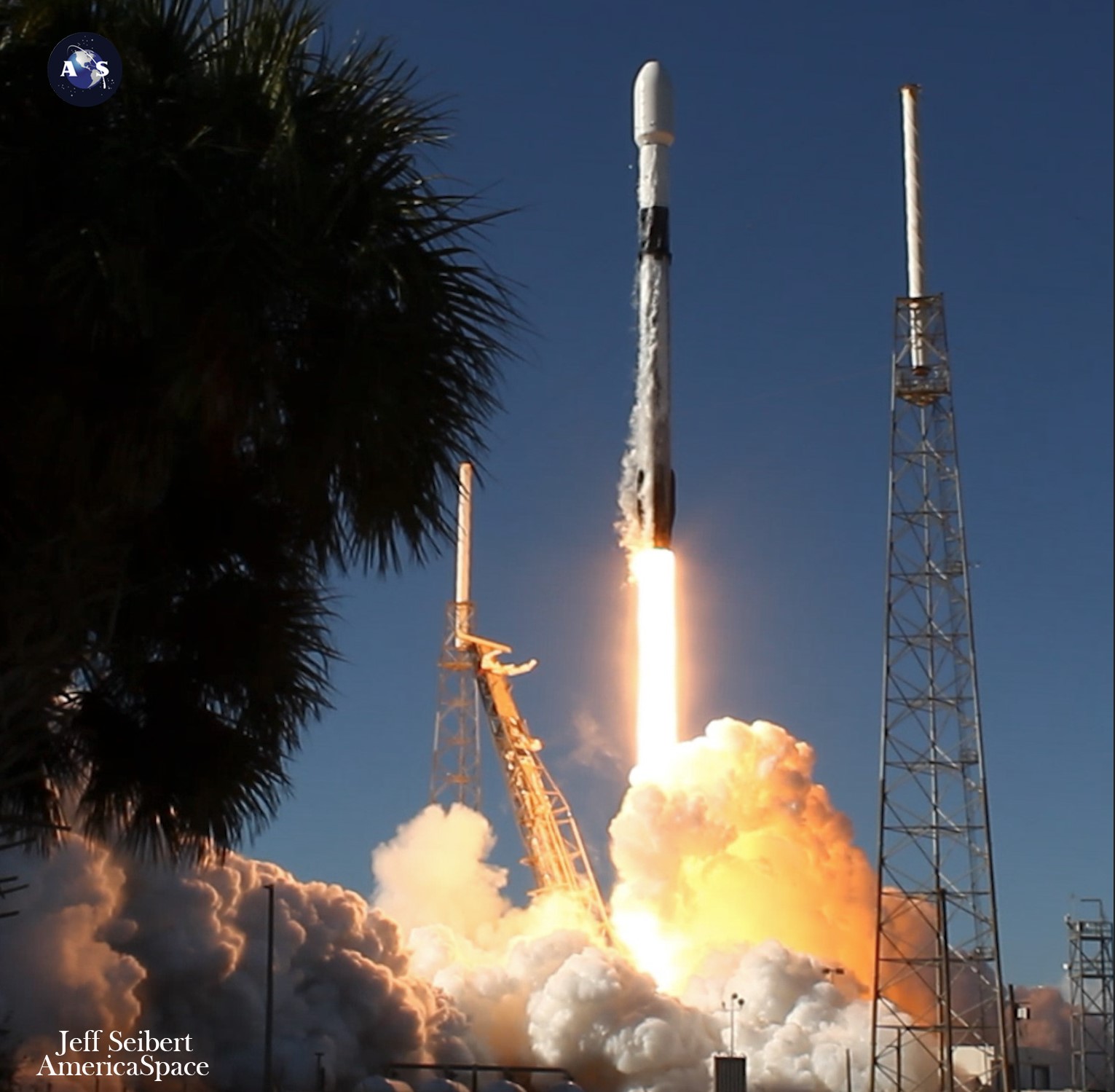
Since then, ten Transporter missions between January 2021 and last month deposited over 830 small satellites—from miniaturized CubeSats and PocketQubes to smallsats and hosted payloads—for more than 50 sovereign nations in support of disciplines ranging from Earth observations, remote sensing and meteorology to technology, communications and navigation, from Signals Intelligence (SIGINT), education and amateur radio to Internet of Things (IoT), Ultra-High-Definition (UHD) streaming and Automatic Identification System (AIS) marine tracking and from X-ray astronomy, astrobiology and ionospheric research to reconnaissance, space weather forecasting and air-traffic management.
Notably, Transporter-1 carried 143 satellites totaling 11,000 pounds (5,000 kilograms) and remains the greatest number of discrete payloads ever orbited by a single U.S. launch vehicle. Two years ago, Transporter-5 carried a first-of-its-kind robotic metals-cutting demonstration and the Transporter program has facilitated the launches of the first national satellites of Albania, Kuwait and Armenia.
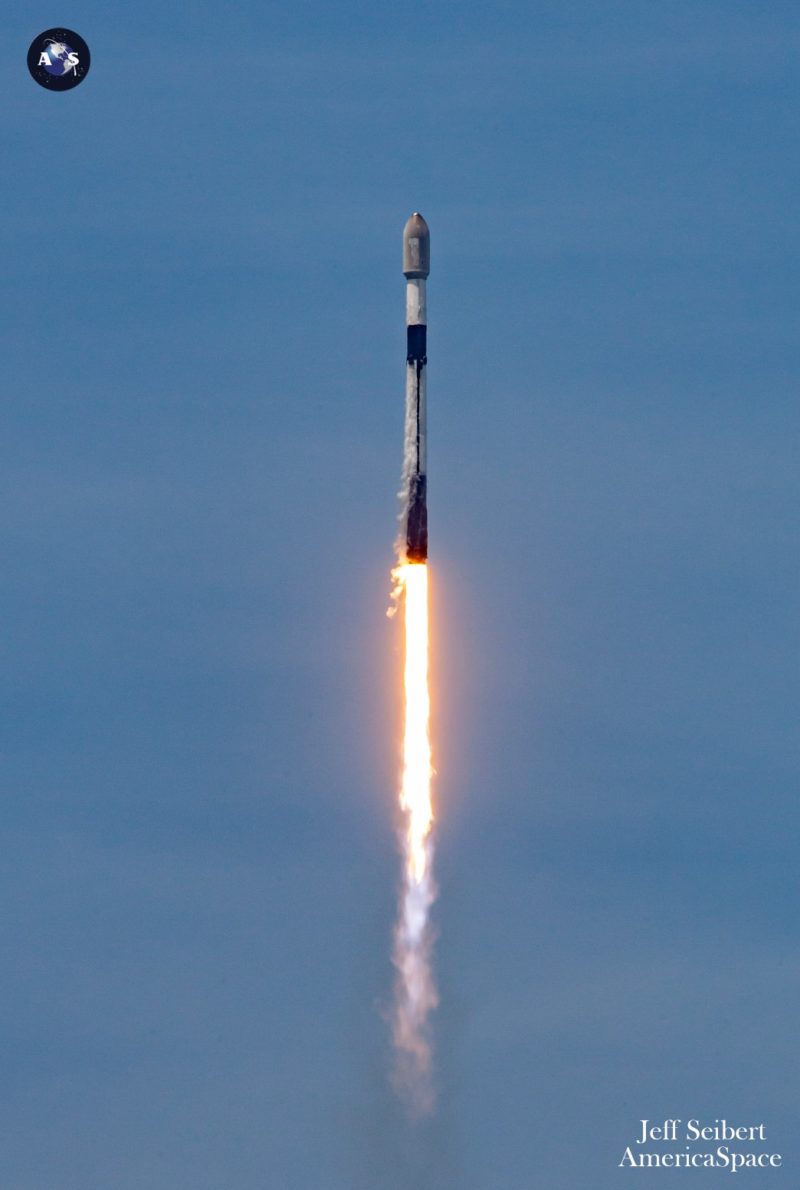
The difference with Bandwagon-1, it seems, is inclination. “Bandwagon-1 is SpaceX’s first dedicated rideshare mission launching to a mid-inclination orbit,” SpaceX explained. “While our Transporter rideshare missions launch to a Sun-synchronous orbit, launching to a mid-inclination orbit fills in the gaps for our customers that wish to expand their coverage or complete unique objectives.
“Mid-inclination offers a higher revisit rate,” it added, “meaning the time between flyovers of the same point is faster than what is seen with other orbits.”
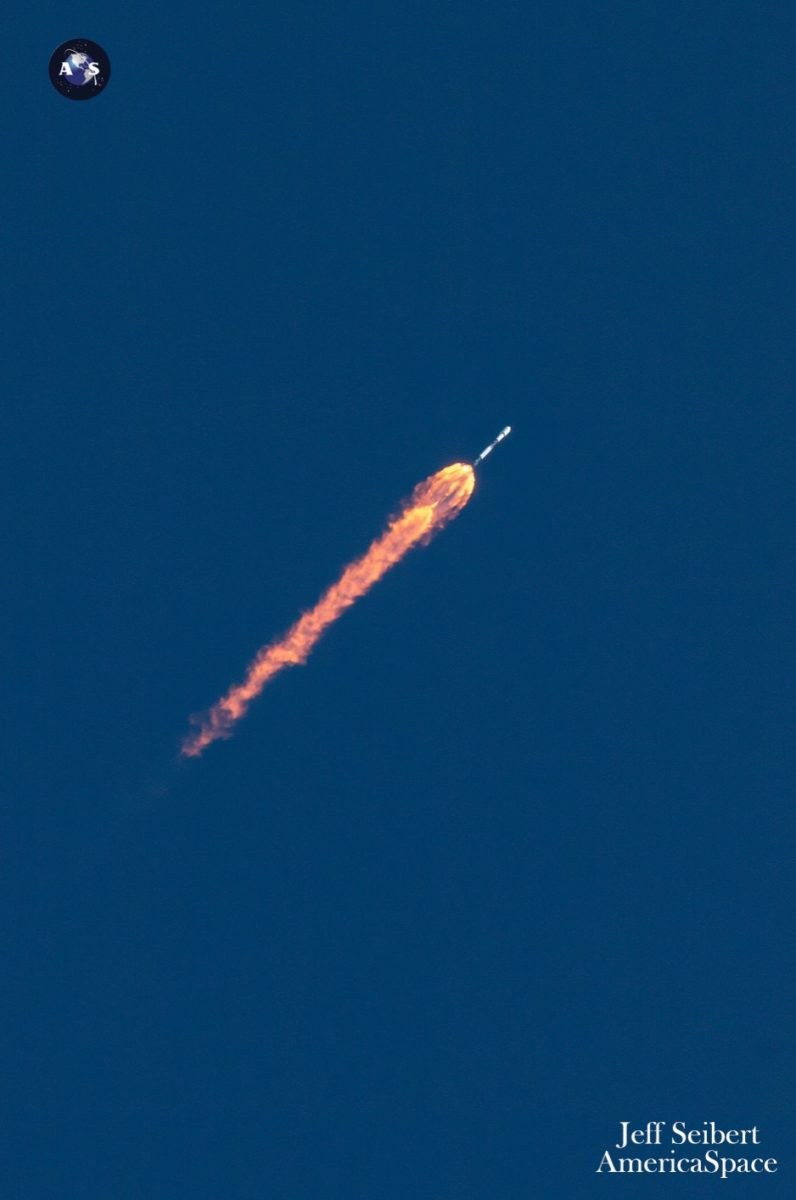
Bandwagon-1 targeted a 45-degree-inclined orbit, at a mean altitude of 340-370 miles (550-600 kilometers) above the Home Planet, and more than half of its 11-strong payload was taken up by Herndon, Va.-headquartered geospatial imaging firm HawkEye 360, which was flying its Clusters 8 and 9—six tiny Hawk satellites in total—in furtherance of monitoring Illegal, Unreported and Unregulated (IUU) fishing in the Indo-Pacific Region. Although 21 Hawks previously rode to orbit in seven three-satellite “batches” aboard RocketLab’s Electron rocket in January of last year and six Falcon 9 missions between December 2018 and April 2023, Bandwagon-1 marks the first occasion that as many as two clusters flew atop a single booster.
“The launch of Clusters 8 and 9 underscores HawkEye 360’s commitment to consistently enhance our constellation to address the mission needs of our customers across the globe,” said HawkEye 360 President Rob Rainhart. “Through the dedication and ingenuity of our space team and partner Space Flight Laboratory (SFL), we are pleased to introduce significant upgrades to our satellite payloads that will further significantly expand our Radio Frequency (RF) data collection and processing capabilities.”
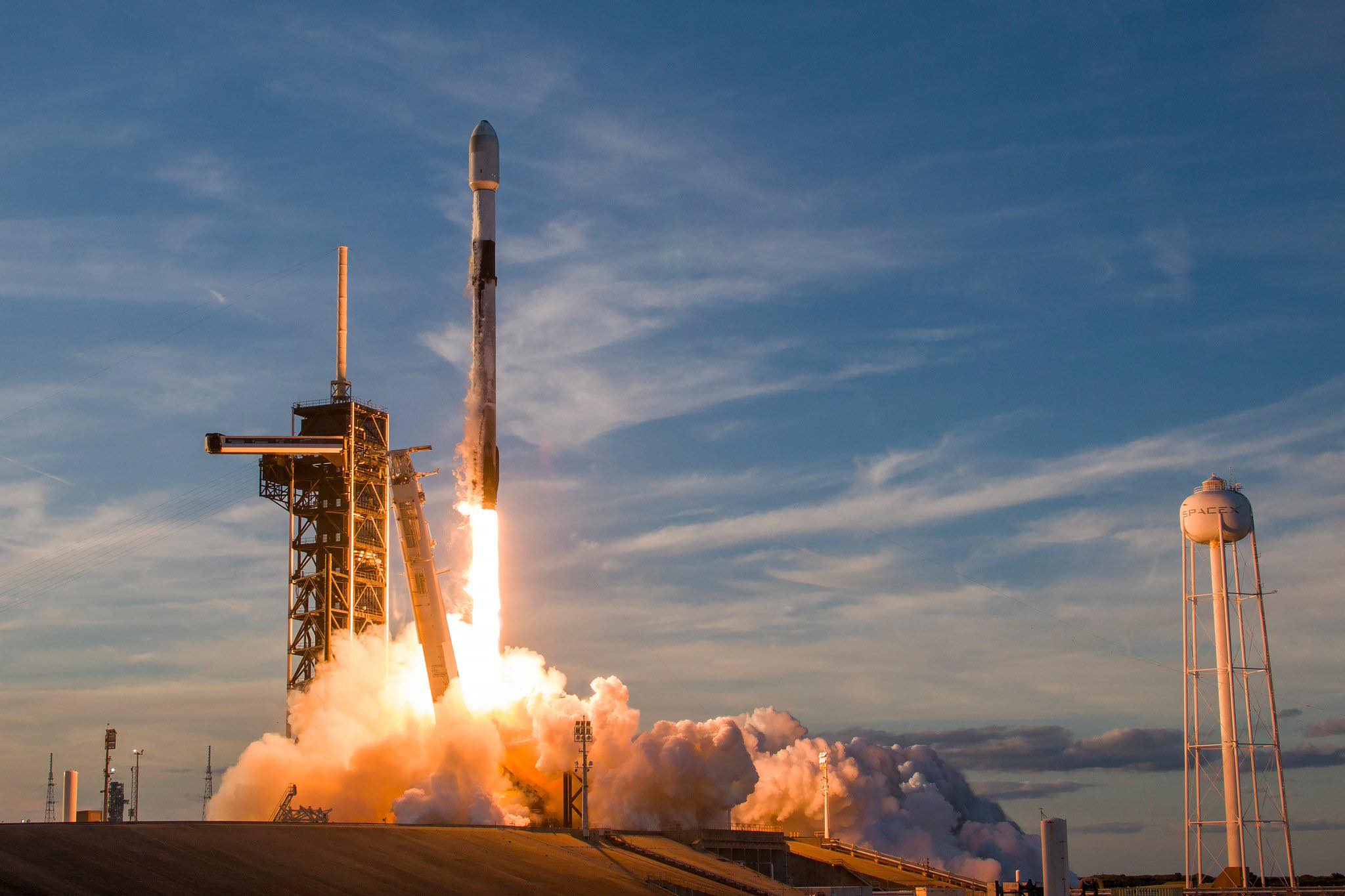
When Clusters 8 and 9 are injected into the mid-inclination orbits to cover the world’s busiest maritime traffic corridor, the Hawks’ upgraded sensitivities will enable a five-times-greater increase in data-gathering capacity, significantly larger bandwidths and multi-band signal collection. “Once Clusters 8 and 9 are in orbit,” noted HawkEye 360, “the constellation…will detect, characterize and geolocate RF signals from a broad range of emitters used for communications, navigation and security.”
The remainder of the Bandwagon-1 payload included Capella-14, the latest in a series of powerful Synthetic Aperture Radar (SAR) smallsats built by San Francisco, Calif.-based Earth observation firm Capella Space. With previous Capellas lofted both by SpaceX and RocketLab’s Electron, this represented the eighth of such satellite lifted to orbit by a Falcon 9 after earlier launches between December 2018 and January 2022.
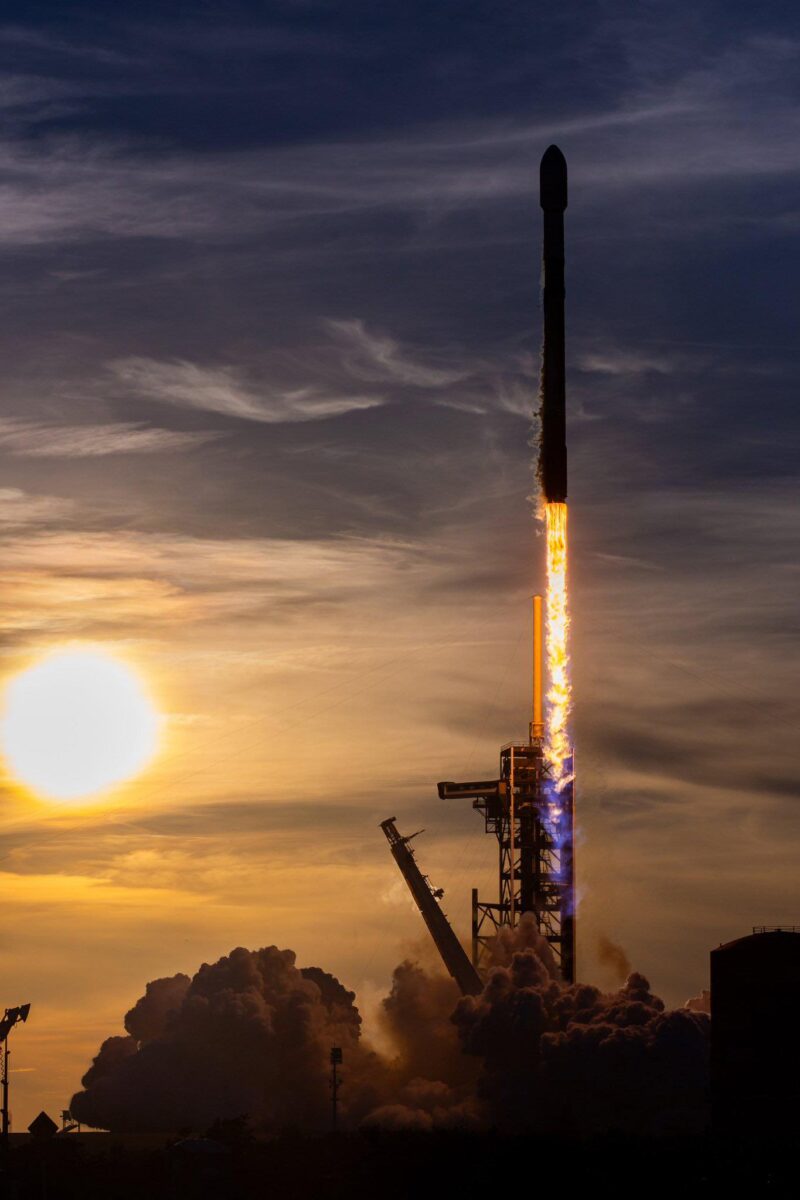
Destined for insertion into a 53-degree-inclined orbit, Capella 14 forms part of Capella Space’s next-generation “Acadia” network, which benefit from improved radar bandwidth from 500-700 MHz and better resolution, higher-quality imaging and shorter times between customer orders and delivery. The newer Acadia satellites, the first of which launched last August, are also equipped with Optical Communication Terminals (OCTs) to make Capella Space the first commercial SAR firm to demonstrate optical inter-satellite links.
Bandwagon-1’s four other payloads included Japan’s Tsukuyomi-II compact radar-imaging satellite, South Korea’s 425Sat reconnaissance satellite, India’s TSAT-1A military satellite and Tyvak International’s Centauri-6 Internet of Things (IoT) satellite.
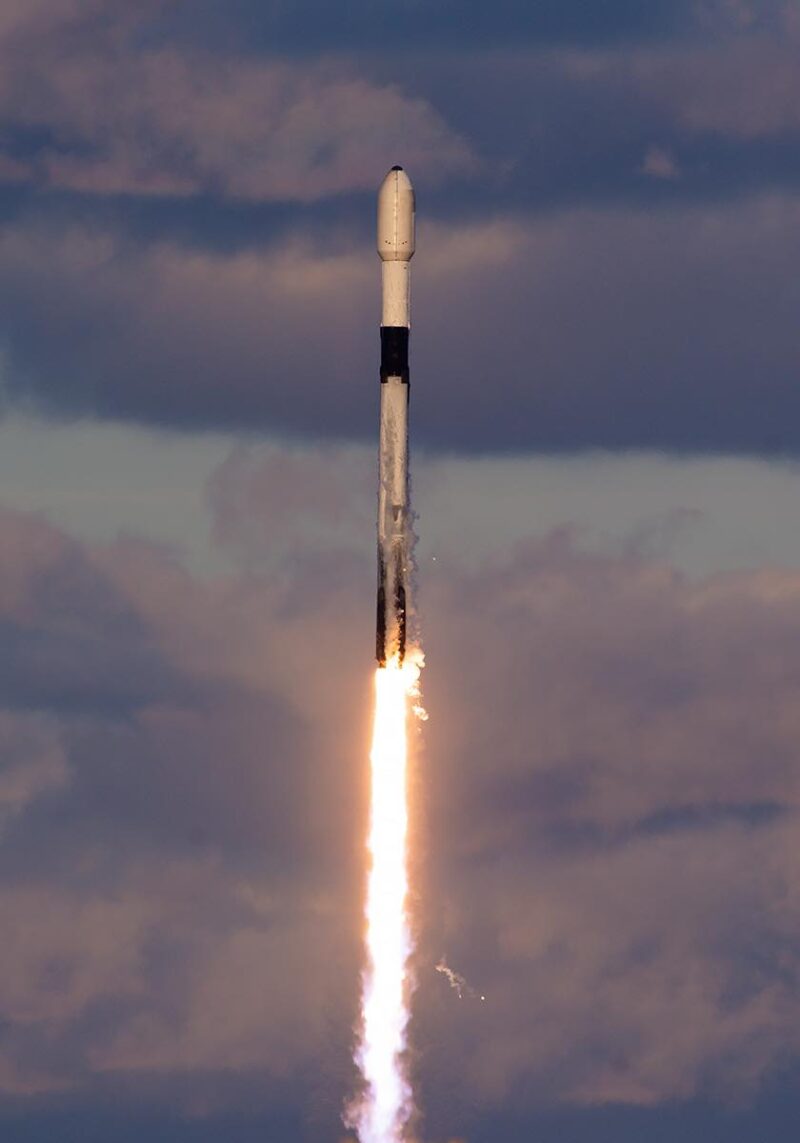
Flying last night’s mission was the Falcon 9 booster tailnumbered “B1073”, which was embarking on her 14th flight and third launch of 2024. She previously supported the 300th Falcon 9 mission in January and helped cement new empirical records last month for the shortest interval between a pair of launches and a trio of launches.
B1073 entered service back in May 2022 and her 13 previous flights have boosted more than 300 Starlinks uphill, as well as the SES-22 and Amazonas Nexus geostationary communications satellites in June 2022 and February of last year and launched a lunar-bound mission in December 2022 with Japan’s Hakuto-R Moon lander, the Rashid rover for the United Arab Emirates (UAE) and NASA’s water-ice-seeking Lunar Flashlight. In March of 2023, on the seventh mission of her stellar career, she became the most flight-seasoned Falcon 9 ever to lift a payload—whether human or cargo—to the International Space Station (ISS) with the CRS-27 Cargo Dragon.
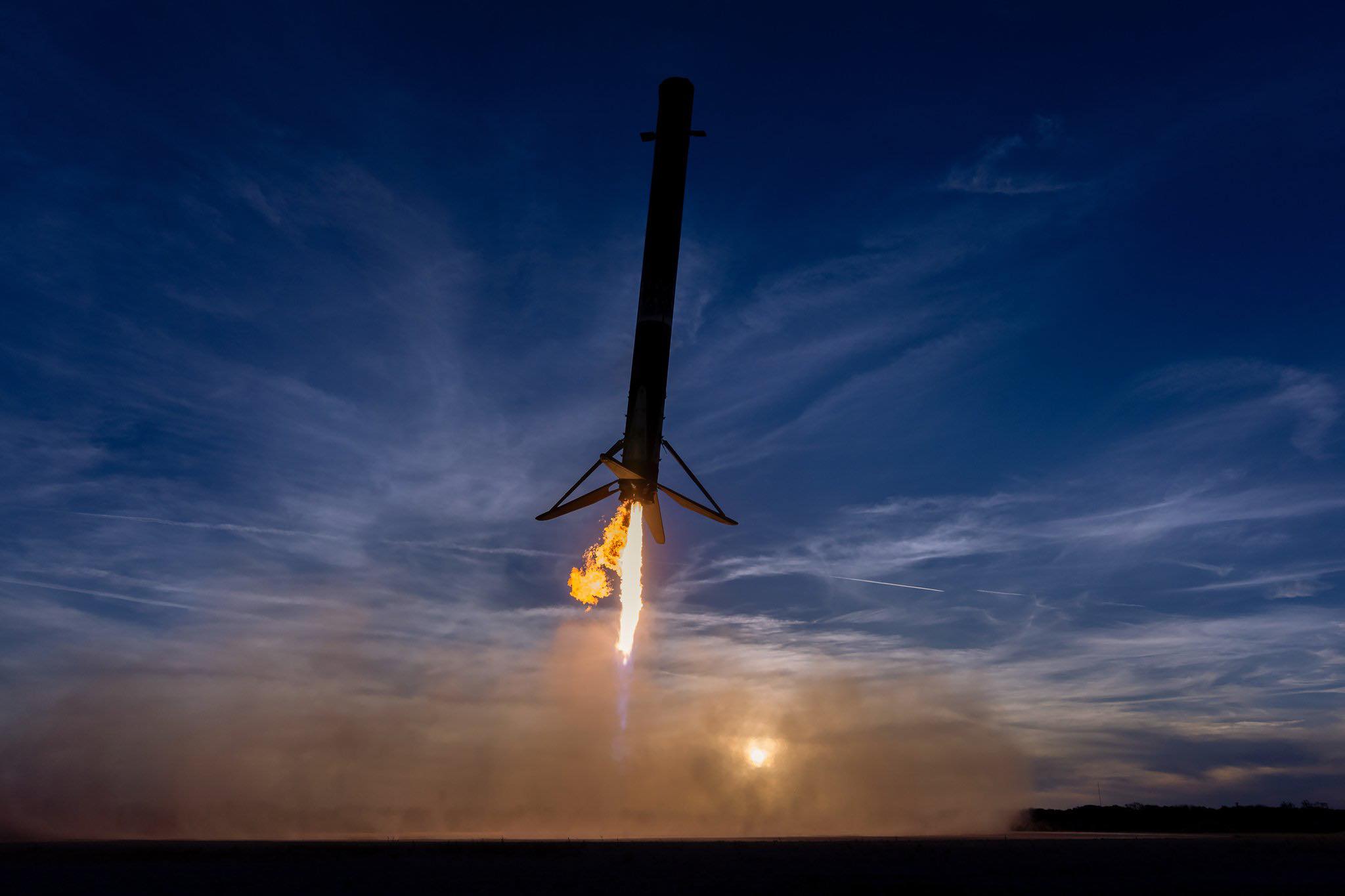
Targeting a T-0 opportunity at 7:16 p.m. EDT Sunday from historic Pad 39A at Florida’s Kennedy Space Center (KSC), with a backup attempt at the same time on Monday evening, Florida’s often intractable weather proved “very favorable”, according to the 45th Weather Squadron at Patrick Space Force Base, with a 95-percent Probability of Go (PGo). Only a slight chance of violating the Thick Cloud Layers Rule stood in Bandwagon-1’s way and without further ado B1073 roared aloft into the gathering darkness of a Space Coast evening to complete its triple-header weekend.
Eight minutes later, her job done for the night, the Falcon 9’s first stage returned to a pinpoint touchdown on solid ground at Cape Canaveral’s Landing Zone (LZ)-1. Meanwhile, the second stage ignited its single Merlin 1D+ Vacuum engine for six minutes to deliver the Bandwagon-1 payloads the rest of the way uphill.




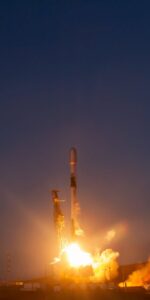
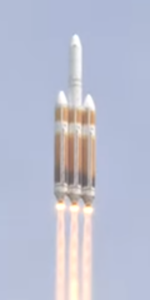
One Comment
Leave a ReplyOne Ping
Pingback:After Delta IV Heavy’s Swansong, Cape Roars to Accelerated Falcon 9 Launch Cadence - AmericaSpace